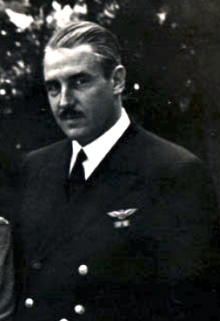Alfred Easton Poor
| Alfred Easton Poor | |
|---|---|
 |
|
| Born | May 24, 1899 Baltimore, MD |
| Died |
January 13, 1988 (aged 88) New York, NY |
| Nationality | American |
| Alma mater |
Harvard University, A.B., 1920 University of Pennsylvania, B. Arch., 1923; M. Arch., 1924 |
| Occupation | Architect |
| Buildings |
Jacob K. Javits Federal Building James Madison Memorial Building, US LIbrary of Congress |
| Projects | Wright Brothers National Memorial |
Alfred Easton Poor (May 24, 1899 – January 13, 1988) was an American architect who was involved with many buildings and projects in New York City as well as multiple works in Washington, D.C. for the US Federal Government. In 1928 he won an open competition to design the Wright Brothers National Memorial.
While a student at the University of Pennsylvania, he studied under Paul Philippe Cret. Poor was the president of the National Academy of Design in New York from 1966 to 1977, organizing its 150th anniversary in 1975. He has been called "one of America's most prominent twentieth century architects" and a "prominent member of the international school of modern architecture."
Over his long career, Poor's projects include both public and private sector works. Along with fellow New York architect Robert P. Rogers, Poor won the open international design competition for the Wright Brothers National Memorial in 1928.
For the US Government, he worked on a project that restored and extended the East Front of the US Capitol building in the early 1960s, and was also a leading architect in designing the US Library of Congress' James Madison Memorial Building, the third-largest public building in Washington.
Poor was especially active in the New York City area. His projects include the Jacob K. Javits Federal Building, the Queens County Courthouse and prison in Kew Gardens, the Home Insurance Company Building, and the 40-acre Red Hook housing projects.
Poor was chosen by Walter Annenberg to design the Annenberg School for Communication at the University of Pennsylvania.
...
Wikipedia
